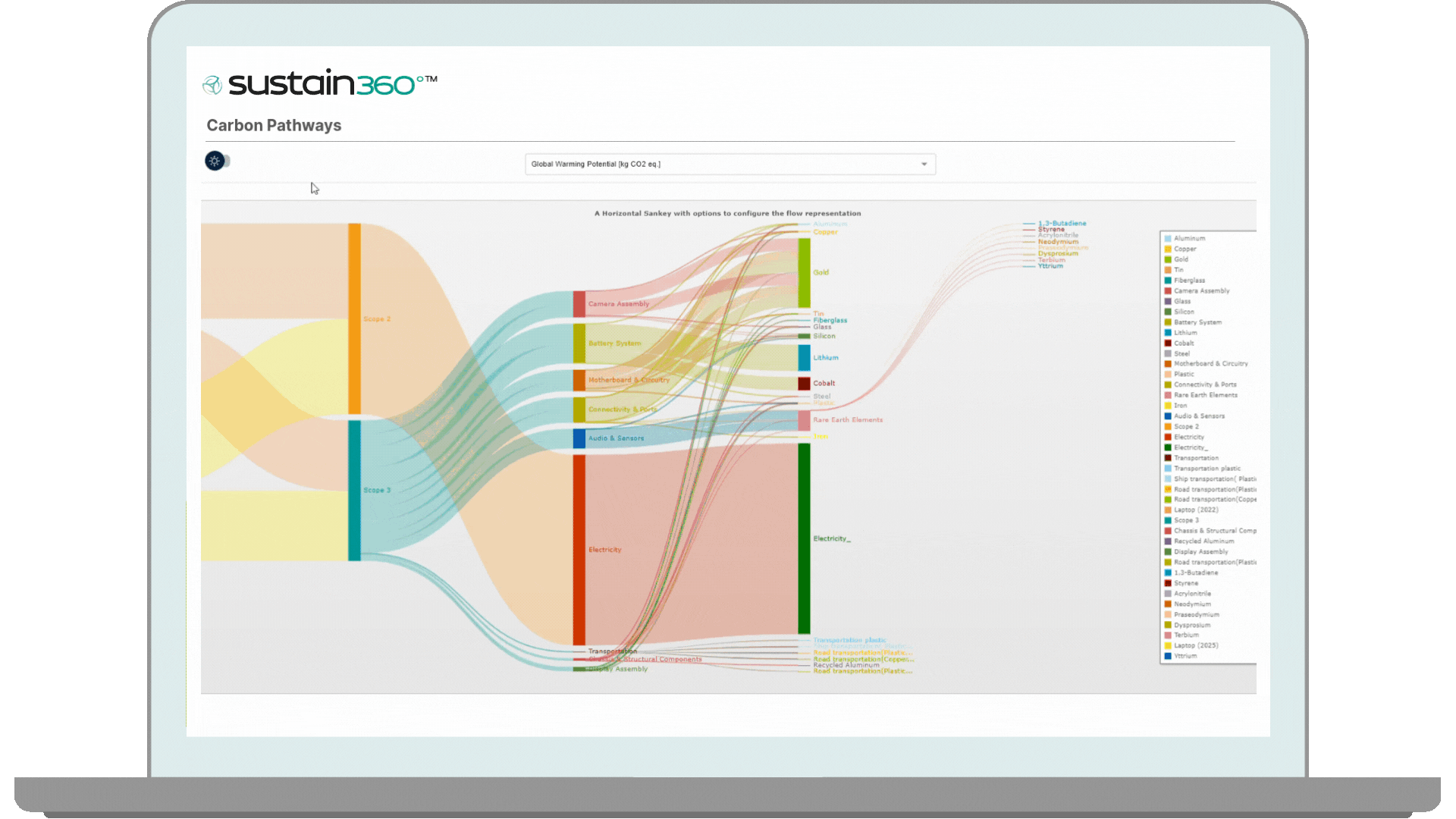LIFE CYCLE ASSESSMENT
Turn Design Decisions into Strategic Advantage
Leverage AI-powered life cycle assessments to uncover hidden cost, carbon, and risk drivers across your product and supply chain footprint.
Sustain360°™ delivers dynamic, data-rich LCA insights that help design, procurement, and sustainability teams move beyond static reports to precise materials, sourcing, and manufacturing decisions from day one.

Profitability Meets Sustainability
Use Sustain360°™ to perform accurate life-cycle-cost assessments across the entire product lifecycle.

Lifecycle Modeling
Simulate cradle-to-gate and cradle-to-grave impacts with system-level transparency across design, use, and end-of-life phases.
Smart Design
Automate cost and carbon calculations with "design-to-cost" and "design-to-carbon" at every lifecycle stage.
Scenario Engine
Test decarbonization strategies by simulating material changes, energy alternatives, and low-carbon suppliers.
WHY CHOOSE US?
Modernize product development with cost-effective, circular-by-design strategies

Autoclassification of Emissions and Costs
Across the Product Life Cycle
Game changing approach to generating Life Cycle Cost Assessments based on the power of knowledge graphs to reduce time, cost and complexity by 3x.
Design products for reuse, reducing material costs and waste across the value chain.
Generate Dynamic Product Life and Cost Analysis
Fast track full product lifecycles — from chemicals to entire
product end-of-life assessments.
Our AI and cloud-native platform delivers ISO aligned Life Cycle Assessments (LCAs) and Environmental Product Declaration (EPDs).


Simulate Alternatives and Financial Impacts
Model alternative materials, energy, suppliers, and transport
to optimize costs, reduce emissions, and design climate-
resilient operations.
Inbuilt financial Waterfall and Marginal Abetment Cost Curve (MACC) streamlines investment analysis.

AI Based Simulation Engine
Run scenarios and analysis for material, cost, trade routes, decarbonization and investment scenarios and other variables across the supply chain to meet net-zero goals.